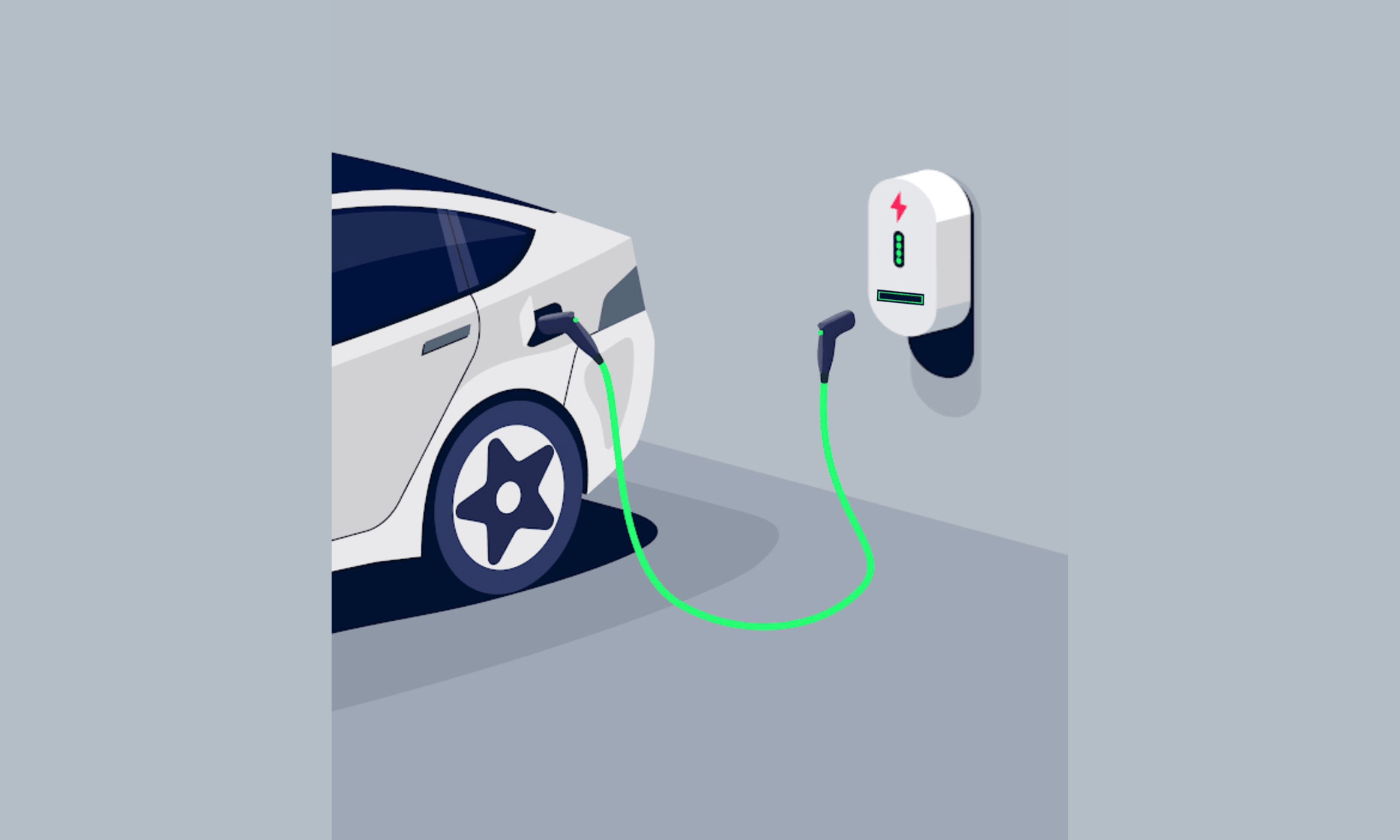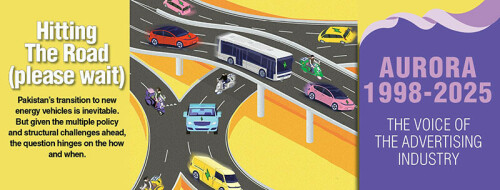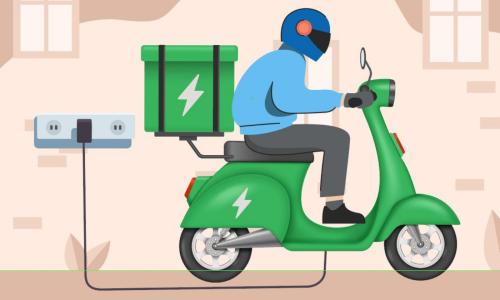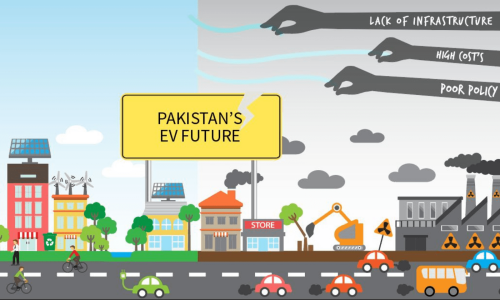Will Pakistan’s New EV Policy Work?
Pakistan appears to be on its way to an economic turnaround. The improved macroeconomic numbers seen across manufacturing, agriculture and current account platforms are leading to concerted efforts towards clean energy.
1. Electric Vehicles (EVs) – No
Other Choice
EVs are critical for a country like
Pakistan, which faces consistently
worsening levels of smog year
after year. So much so that it is
now being referred to as the ‘fifth
Pakistani season’. In this context,
automobiles account for nearly a
quarter of the harmful greenhouse
emissions, with Punjab alone
garnering 43% of the total air
pollution load. Projections suggest
that by 2030, approximately
65-70% of the population will be
living in urban areas, leading to a
further increase in transportation
requirements and exacerbating
the environmental burden.
An emphatic move away from conventional vehicles to EVs would cut down Pakistan’s $1.3 billion import bill on fossil fuels and heavy carbon footprint, leading to zero direct greenhouse emissions, to eventually becoming a fossil fuel-free society. As a nod to these pressing environmental and economic challenges, the Engineering Development Board (EDB) has formulated the New Energy Vehicle (NEV) Policy 2025-2030, with the singular objective to transition the transportation sector to EVs in order to reduce greenhouse gas emissions, lower reliance on fossil fuels and develop green technology.
2. NEV Policy 2025-2030
The 2019 EV policy hardly
achieved anything. Targets such
as the transformation of 3,000
idle CNG stations into electric
vehicle charging stations, or
sales of 100,000 electric cars,
never materialised. What is
different in the new policy, and
will it work this time? Key goals
include a significant reduction
in greenhouse gas emissions,
decreased reliance on imported
fuel, and the stimulation of
domestic green technology. The
NEV sets ambitious targets,
aiming for 30% of all new vehicle
sales to be electric by 2030, with
an even more enterprising goal
of 90% by 2040 and a longer
term vision of achieving 100% EV
adoption by 2060.
The policy charts out a three stage, broad-based plan to guide the ambitious transition. Phase I, spanning from 2025 to 2030, will focus on building the EV infrastructure – a widespread network of charging stations and battery swapping facilities, alongside initiatives to create public awareness about EV positives and practicality. Phase II, from 2030 to 2035, will concentrate on nurturing consumers further exacerbating affordability as risk-averse banking practices in Pakistan local EV manufacturers and expanding their adoption across the urban and rural breadth of the country. Finally, Phase III, from 2035 to 2040, will aim for a full scale transition to affordable EVs, facilitating their mass adoption. AI and machine learning will be employed to predict and project EV adoption trends, infrastructure needs, and the economic aspects of the transition through deep analysis of mined, granular data. In terms of financials, the policy recommends purchase subsidies to offset the initial high cost of EVs, the reduction of import taxes on EV components and vehicles, and tax exemptions to augment adoption. Apart from achieving the obvious climatic benefits of moving away from fossil fuels, the policy stresses battery recycling and disposal to ensure environmental protection and promote a circular economy.
3. Will the NEV Policy 2025 Work?
• No Detailed Implementation Roadmap
Analysts assess that the policy is
‘all talk, little action’ and lacks a
detailed implementation roadmap,
strategy, risk mitigation plan, or
defined timelines to realise the
targets, all of which portend
execution delays and inefficiencies.
There is over-reliance on fiscal
incentives and no attention is given
to how these will integrate and
impact the current energy and
transport policies.
• Economic and Financial
Barriers
Currently, EVs
in Pakistan are priced
approximately 1.6 times higher
than comparable internal
combustion engine (ICE)
vehicles. This makes EVs
inaccessible to an enormous
segment of the population.
With the IMF hawk eyeing our
financial system, scowling
at the idea of subsidies and
pushing for a tariff rationalisation
programme for industry, any offer
of subsidies or tax relief would
be dicey. Additionally, limited
access to financing options for consumers further exacerbates affordability as risk-averse banking practices in Pakistan currently restrict the fluid availability
of consumer financing for EVs.
• Infrastructural Deficiencies
Charging stations are limited and
are concentrated in major urban
centres, with an estimated 40% of
these reported to be non-functional.
This sparse network leads to
anxieties among potential EV
users, particularly in the absence of
charging facilities in remote areas,
further undermining consumer
confidence. While Pakistan is
currently in a surplus power
generation capacity, the distribution
companies (DISCOs) have
capacity and load management
problems, while the existing grid
will require substantial upgrades
to meet significant increases
in electricity demand from EV
charging – another tall order.
• Consumer Acceptance
There are misconceptions about EV
performance, battery life and
maintenance costs, leading
to deterrence. There is also
a perceived inadequacy of
charging infrastructure.
• Local Manufacturing Hurdles
These, as well as the lack of a
reliable supply chain, are serious
problems. Can the domestic
industry ramp up EV component
production and supply in the next
five to 10 years? Sadly, at current
resources, no. Imports will only
bleed the national exchequer,
leading to higher costs and
increased vulnerability to global
supply chain disruptions.
• Regulatory Gaps
Federal and
provincial regulations conflict and
are confusing for both investors
and implementers. Responsibilities
for the control of crucial aspects
such as battery safety standards
and charging infrastructure
regulations remain unclear.
Registration processes for EVs
are cumbersome, discouraging
potential buyers. This lack of a
unified, comprehensive regulatory
framework is likely to create
uncertainty and hinder investment
in the EV sector.
These are the reasons why the last EV policy failed, and the current one seems similarly hollow and without substance in the absence of a solid transitional and regulatory game plan.
Nevertheless, the NEV represents a basis for EV launch, and there are some signs the policy may succeed. At the very least, the policy devises a three-phased approach that does allow for a gradual and systematic development of the foundations for EV adoption.
Pakistan’s current surplus energy landscape can spare electricity to power a growing fleet of EVs. The off-grid solar systems boom in Pakistan offers growing potential for decentralised and sustainable EV charging solutions.
Within the NEV policy, the government can refer to tested global practices and strategies from China and Thailand to develop effective financial incentive mechanisms, including subsidies, low-interest financing schemes and tax relief at consumer and investor levels. The NEV would do well to proactively push for alignment between federal and provincial government bodies, investors, manufacturers, energy providers and infrastructure developers, as well as consumer groups and public advocacy organisations to ensure synergised policy implementation and regulation. A robust charging infrastructure is critical and makes EV ownership practical for consumers. The government’s plan to establish 3,000 charging stations by 2030 can only be achieved by deploying public private partnerships.
EV adoption in Pakistan is negligible, with the two-wheeler segment taking 70% of sales thus far. However, momentum is up with 50,000 such motorcycles produced during FY 2023-24, up from 15,000 in FY 2022-23. As of February 2025, the EDB has granted licenses to over 57 manufacturers. Chinese brands such as BYD, BAIC, Changan, JAC, Great Wall Motors (GWM), MG, FAW and Chery have entered the fray, both as direct imports and joint venture mechanisms.
Despite this positivity, the NEV policy will succeed only if armed with a definitive, time-bound strategic plan that addresses infrastructure, manufacturing and financial incentives, streamlines implementation and encourages investment. Post the lethargy of the last EV policy, it is time to learn from missed boats and find the right place for Pakistan in a prospering global EV ecosystem.
Mazhar M. Chinoy has led the marketing services function for a leading multinational automobile company and has been a director at LUMS. mazharmchinoy@yahoo.com




Comments (3) Closed